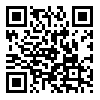Tue, Dec 16, 2025
[Archive]
Volume 11, Issue 4 ( December 2019 2019)
Iranian Journal of Blood and Cancer 2019, 11(4): 133-138 |
Back to browse issues page
Download citation:
BibTeX | RIS | EndNote | Medlars | ProCite | Reference Manager | RefWorks
Send citation to:



BibTeX | RIS | EndNote | Medlars | ProCite | Reference Manager | RefWorks
Send citation to:
Karbasian F, Zafari A, Goudarzipour K, Mesdaghi M, Shariatzadeh S, Eshghi P. Evaluation of Changes in Blood Products Transfusion Indices Following Three Years of Implementation of Iranian Blood Transfusion Organization Standards. Iranian Journal of Blood and Cancer 2019; 11 (4) :133-138
URL: http://ijbc.ir/article-1-908-en.html
URL: http://ijbc.ir/article-1-908-en.html
Fereshteh Karbasian1 
 , Ali Zafari2
, Ali Zafari2 
 , Kourosh Goudarzipour1
, Kourosh Goudarzipour1 
 , Mehrnaz Mesdaghi3
, Mehrnaz Mesdaghi3 
 , Siavash Shariatzadeh2
, Siavash Shariatzadeh2 
 , Peyman Eshghi *4
, Peyman Eshghi *4 


 , Ali Zafari2
, Ali Zafari2 
 , Kourosh Goudarzipour1
, Kourosh Goudarzipour1 
 , Mehrnaz Mesdaghi3
, Mehrnaz Mesdaghi3 
 , Siavash Shariatzadeh2
, Siavash Shariatzadeh2 
 , Peyman Eshghi *4
, Peyman Eshghi *4 

1- Pediatric Congenital Hematologic Disorders, Research Institute for Children's Health, Shahid Beheshti University of Medical Sciences, Tehran, Iran
2- Student Research Committee, School of Medicine, Shahid Beheshti University of Medical Sciences, Tehran, Iran.
3- Department of Allergy and Immunology, Mofid Children Hospital, Shahid Beheshti University of Medical Sciences, Tehran, Iran.
4- Pediatric Congenital Hematologic Disorders, Research Institute for Children's Health, Shahid Beheshti University of Medical Sciences, Tehran, Iran ,peshghi64@gmail.com
2- Student Research Committee, School of Medicine, Shahid Beheshti University of Medical Sciences, Tehran, Iran.
3- Department of Allergy and Immunology, Mofid Children Hospital, Shahid Beheshti University of Medical Sciences, Tehran, Iran.
4- Pediatric Congenital Hematologic Disorders, Research Institute for Children's Health, Shahid Beheshti University of Medical Sciences, Tehran, Iran ,
Abstract: (4673 Views)
Background: Increasing demand for blood and blood products mostly due to increased individual access to health care services rises the concerns over lack of adequate amounts of blood products. It also can impose additional costs to blood transfusion centers and may increase transfusion-related complications. We aimed to investigate the impact of the Iranian Blood Transfusion Organization (IBTO) standards after three years of blood-bank committee activities on optimizing the consumption of the blood products.
Methods: All request forms of blood and blood products of Mofid Children’s Hospital were reviewed according to the department and type of the product in 2013 and indexes of “cross-matched to transfusion ratio” (C/T ratio), “transfusion index” (TI) and “transfusion probability” (%T) were calculated. Following 3 years of training by the Blood Bank Committee of the hospital and holding different meetings and workshops using IBTO standards, the same parameters were reassessed in 2017.
Results: In 2013, 13653 units of blood and blood products were ordered of which 10472 units (77%) were transfused and 3181 units (23%) were returned. C/T Ratio was equal to 1.43. After about 3 years of intervention, 17946 units of blood and blood products had been cross-matched of which 14775 units (83%) were transfused and 3171 units (17%) were returned. C/T Ratio after 3 years of intervention was equal to 1.33 (P<0.0001). T% was 69% in 2017 compared to 62% in 2013. Also, TI was 0.97 in 2017 compared to 0.83 in 2013. The blood bank committee’s activities in surgical departments improved C/T ratio of 2.83 to 2.13.
Conclusion: This study showed that holding scientific sessions and blood bank academic activities during more than 3 years was successful to optimize the use of blood and blood products in our hospital, particularly in surgical departments.
Methods: All request forms of blood and blood products of Mofid Children’s Hospital were reviewed according to the department and type of the product in 2013 and indexes of “cross-matched to transfusion ratio” (C/T ratio), “transfusion index” (TI) and “transfusion probability” (%T) were calculated. Following 3 years of training by the Blood Bank Committee of the hospital and holding different meetings and workshops using IBTO standards, the same parameters were reassessed in 2017.
Results: In 2013, 13653 units of blood and blood products were ordered of which 10472 units (77%) were transfused and 3181 units (23%) were returned. C/T Ratio was equal to 1.43. After about 3 years of intervention, 17946 units of blood and blood products had been cross-matched of which 14775 units (83%) were transfused and 3171 units (17%) were returned. C/T Ratio after 3 years of intervention was equal to 1.33 (P<0.0001). T% was 69% in 2017 compared to 62% in 2013. Also, TI was 0.97 in 2017 compared to 0.83 in 2013. The blood bank committee’s activities in surgical departments improved C/T ratio of 2.83 to 2.13.
Conclusion: This study showed that holding scientific sessions and blood bank academic activities during more than 3 years was successful to optimize the use of blood and blood products in our hospital, particularly in surgical departments.
Keywords: Blood substitutes, Blood banking, Transfusion medicine, Transfusion indices, Cross-matched to transfusion ratio, Transfusion index, Transfusion probability
: Original Article |
Subject:
Pediatric Hematology & Oncology
Received: 2019/06/15 | Accepted: 2019/12/30 | Published: 2020/01/27
Received: 2019/06/15 | Accepted: 2019/12/30 | Published: 2020/01/27
Send email to the article author
| Rights and permissions | |
 |
This work is licensed under a Creative Commons Attribution-NonCommercial 4.0 International License. |


